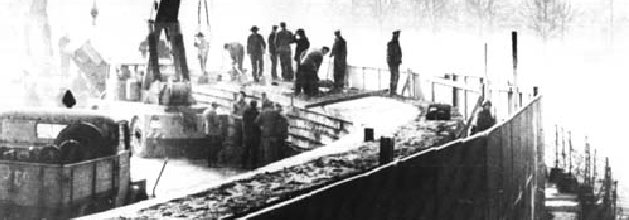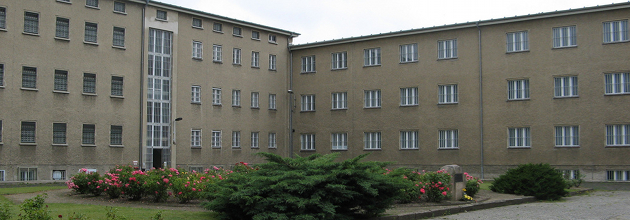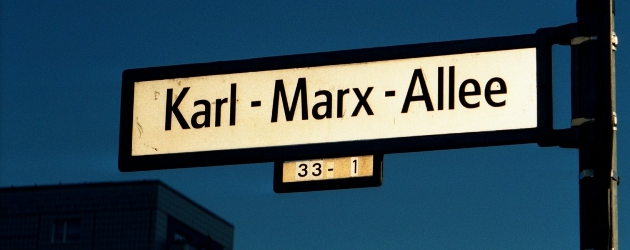By her own telling, Prof. Dr. Mary Fulbrook (University College London) conceived of the idea of writing a GDR history already in the early 1980s. I’m sure at the time she thought of some of the inherent difficulties in telling the story of a society that was, relative to the West, rather closed.
Then came 1989 and the years thereafter, when an explosion of material became available. I would guess that the sudden mountains of documents were rather daunting to specialists in German history. But Fulbrook waded through them and came out with this excellent history in 1995.
The book is divided into three sections: “The Contours of Domination”, wherein the party and state security apparatus are discussed, as well as extra-party organizations or communities (Church, labor union, academia etc.) that helped maintain control in areas where the party did not reach; “Patterns of Popular Compliance and Constraint”, where the opinions of the general populace are taken into consideration, as well as some of the Party’s strategies to mould its citizens; and “Challenges to Domination”, which begins with the June 1953 uprising and recounts some other more minor instances of uprising, then leading in to the 1980s, when the dissent took root, became more open and eventually led (as one factor) to the downfall of the regime.
It’s easy for works of history to be too dry for (shall we say) common consumption, particularly those histories that are more "scholarly" than "popular", as is the case with this book. One device that can bring the reader in early — “hook him”, so to speak — is to start off with a good human-interest story. Fulbrook does precisely this by opening the book as follows:
On Wednesday, 21 September 1961, Sieglinde M., a sixth-form pupil in Anklam, Neubrandenburg, came to school wearing a black pullover. For this, she was expelled from school and forced to ‘work in production.’
And not just poor Sieglinde, but her entire class. They were protesting the new law requiring service in the National People’s Army. This incident — one which we who were raised in western democracies would consider trivial, harmless and maybe even a little bit silly — raised alarms at the highest levels of the GDR government.
When reading the book for the first time, I considered this opening story to be important because I believe there are many intelligent people out there — particularly now, in 2009 — who attempt to minimize the dictatorial nature of the regime. (Of course, the title alone, Anatomy of a Dictatorship, had already gone quite far in assuring me that Professor Fulbrook was not one to do so!)
She begins chapter two, “Structures and Mentalities of Power”, with this rather clear statement:
The GDR was a repressive state. It was a dictatorship.
Yet she hardly takes a purely moralistic approach, which is no doubt tempting to people such as myself. But of course she is that much better as a historian by not dedicating every sentence to a black and white interpretation of the GDR. As she explains, that would be ahistorical. It would be counter-factual, because the truth of the matter is that many in the GDR did not see their own dictatorship in such black-and-white moralistic terms. In all honesty I find that truth to be somewhat painful, just as it depresses me that many who live in the eastern states of Germany today are actually longing for some kind of return to the GDR. But facts are facts, and Professor Fulbrook reports them, as well she should.
I actually read the book several years ago, and I notice now that I had turned down corners of several pages where I found passages to underline. I’ll submit just one of them here for your consideration. She’s talking about the massive amount of information the Stasi retained about people. Computer technology in the east was behind, therefore everything was kept on paper and cards:
And, as [Erich] Mielke is alleged to have commented, cards and paper have the edge over computers when there is a power failure — an important consideration under actually existing socialism. [p. 49]
Am I mistaken in finding a subtle bit of humor there? I think she’s poking a bit of fun at the regime by pointing out a weakness, in this case the very real problem of power failures, while labeling the regime with the moniker they themselves enjoyed: "real existing socialism" (real existierender Sozialismus).
Later she adds:
In retrospect, the childlike proliferation of codes and secrets, the guidelines and procedures, and the files of trivial observations couched in the self-important jargon of bureaucracy, could on occasion almost appear quite comic, were it not so tragic for those whose lives and careers were blighted in the process. [pp 49-50]
If you the history of the East German Communist Dictatorship interests you, you will undoubtedly enjoy Anatomy of a Dictatorship. (Amazon US, UK, CA, DE [english])
(Photo is mine, available under the Creative Commons license. For details please see the photo’s page at Flickr.)













